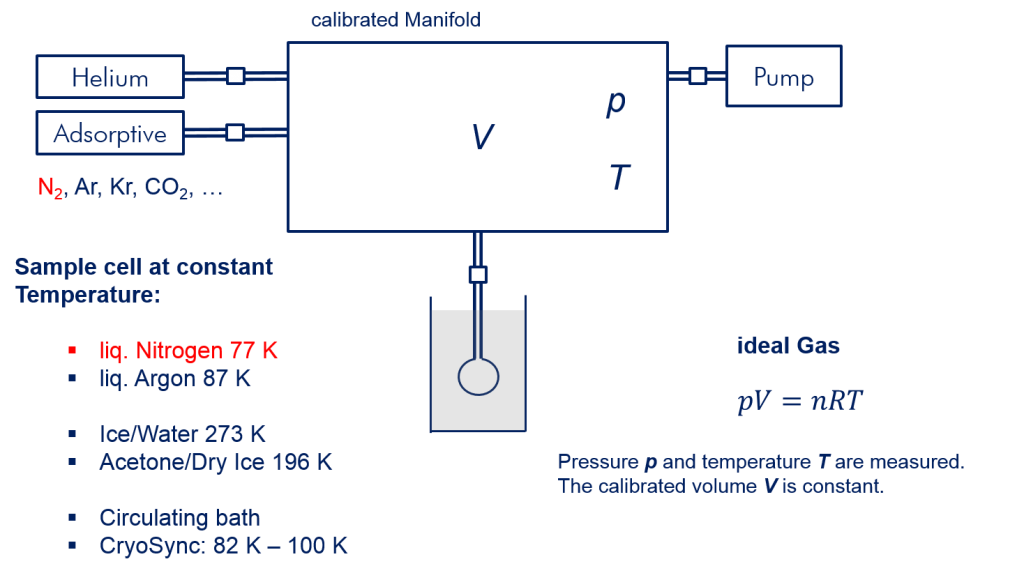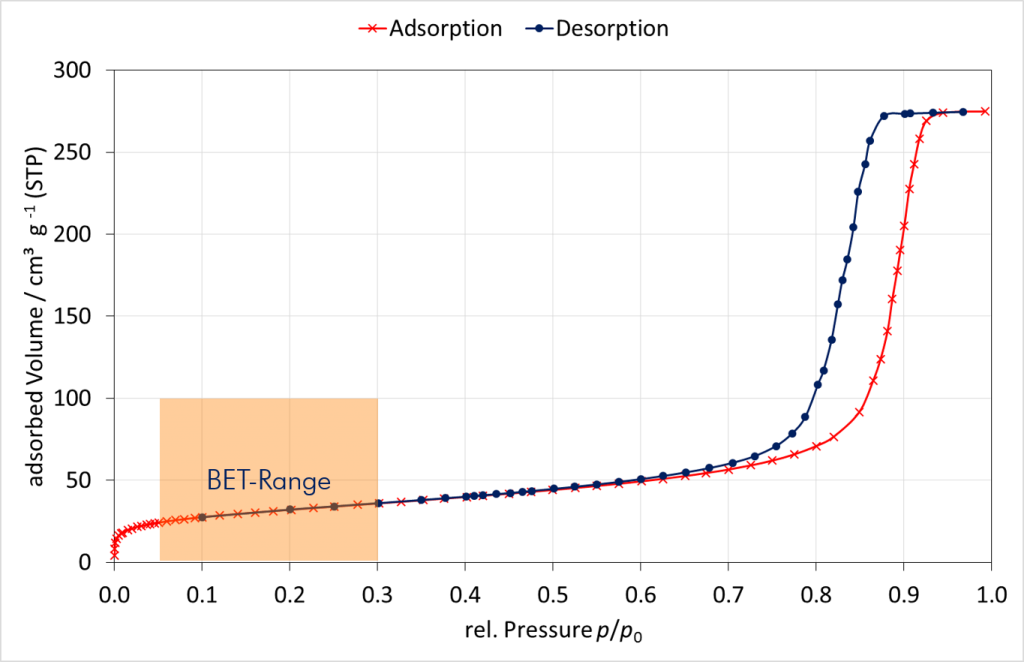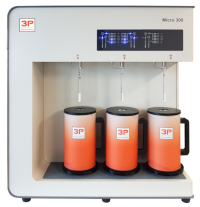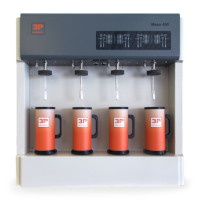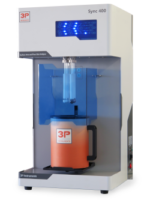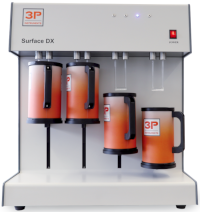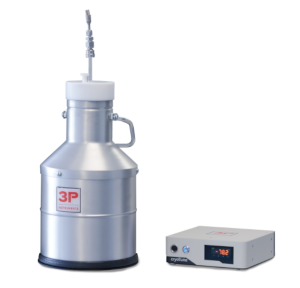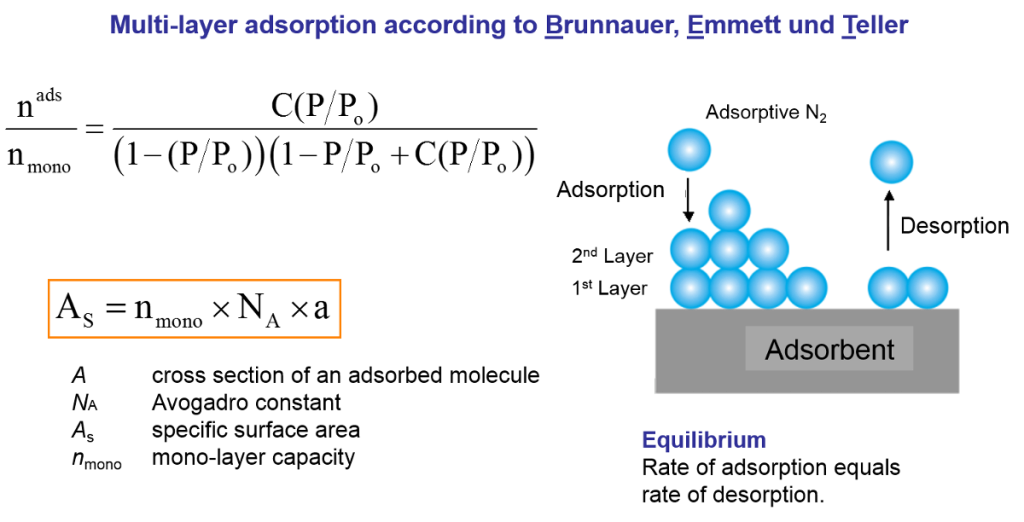Gas adsorption: Determination of the specific surface area (BET surface area)
The determination of specific surface areas represents a major task regarding the characterization of porous and finely-dispersed solids. Gas adsorption is the appropriate method to solve this task. If a gas gets in contact with a solid material a part of the dosed gas molecules is being adsorbed onto the surface of this material. The adsorbed amount of gas depends on the gas pressure, the temperature, the kind of gas and the size of the surface area. After choosing the measuring gas and temperature, the specific surface area of a solid material can be reliably and comparably calculated from the adsorption isotherm. Due to practical reasons the adsorption of Nitrogen at a temperature of 77 K (liquid Nitrogen) has been established as the method for the determination of specific surface areas.
Schematic measurement setup
Isotherm with highlighted range for calculation of specific surface area (BET)
Measuring method
Speaking about the BET method, actually means the analysis of isotherm data by a method developed by Brunauer, Emmett and Teller. By means of the BET equation the amount of adsorbed gas, which build up one monolayer on the surface, can be calculated from the measured isotherm. The amount of molecules in this monolayer multiplied by the required space of one molecule gives the BET surface area. Besides the adsorption of Nitrogen at 77 K, Krypton adsorption at 77 K is recommended for the determination of very small surface areas.
Mathematical principles for calculation of BET surface area
 Deutsch
Deutsch English
English

